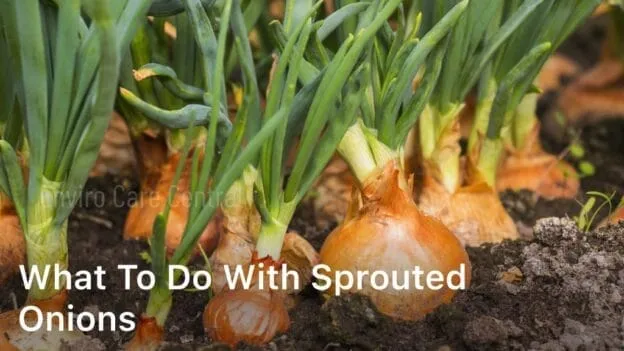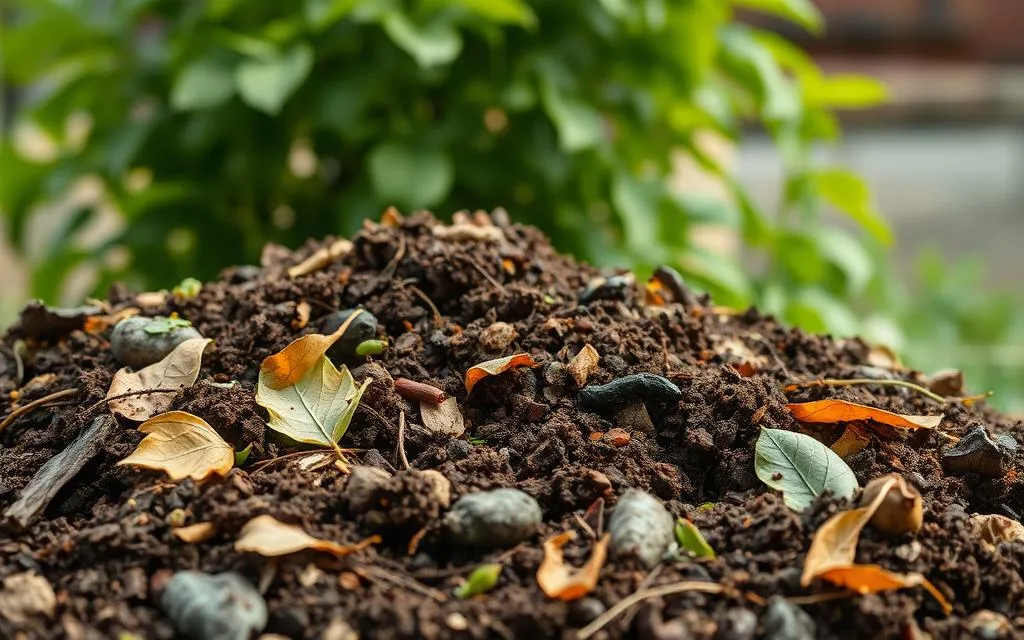envirocarecentral.com. How do Plants and Animals Depend on Each Other – Explore the intricate ecosystem with us as we delve into how plants and animals depend on each other, understanding symbiosis and survival. Plants and animals are two essential components of any ecosystem. While plants provide food, oxygen, and habitat for animals, animals, in turn, play an important role in the reproduction and growth of plants. There are several ways that plants and animals depend on each other for their survival, and these relationships are crucial in maintaining a balanced ecosystem. In this section, we will explore the concept of symbiosis and understand how different species interact and rely on one another in the ecosystem. Key Takeaways Plants and animals depend on each other for their survival Symbiosis is the interaction and interdependence of different species Understanding these relationships is crucial in maintaining a balanced ecosystem Animals rely on plants for food and habitat, while plants rely on animals for pollination and seed dispersal There are various types of symbiotic relationships, including mutualism, commensalism, and parasitism Symbiotic Relationships in the Ecosystem Symbiosis, the close and long-term interaction between different species, characterizes much of the relationships between plants and animals. There are three types of symbiotic relationships: mutualism, commensalism, and parasitism. Mutualism Mutualism is a type of symbiotic relationship where both species benefit. This relationship is common between plants and animals, where the animals pollinate the plants while gathering nectar or pollen as food. In turn, the animals (such as bees and butterflies) play a significant role in fertilizing the plants. For instance, the bees are attracted to the bright color, sweet aroma, and rich nectar of flowers, and in collecting these food sources, they transfer pollen from the male to the female flowers, thereby fertilizing them and enabling the growth of fruits and seeds. This mutually beneficial relationship is crucial for the survival of many plant and animal species in the ecosystem. Commensalism Commensalism is a type of symbiotic relationship where one species benefits without harming the other. In the context of plants and animals, animals often use plants for shelter or as a means of transport, without affecting the plant’s growth or survival. For example, birds seek shelter and nesting sites in trees, while orchids use tree branches as a support structure to grow and thrive. While the plants do not benefit, they are also not harmed, and the animals can continue to live and thrive. This type of relationship is less common than mutualism and parasitism. Parasitism Parasitism is a type of symbiotic relationship where one species benefits at the expense of the other species. In the case of plants and animals, animals can act as parasites on plants, using them as a source of food or shelter. For example, mistletoe plants grow on trees, relying on the tree for support and drawing nutrients and water from the tree. In this relationship, the mistletoe benefits while the tree is harmed or even killed by the parasite. Understanding the different types of symbiotic relationships between plants and animals helps us appreciate the intricate dependencies within the ecosystem. These relationships are crucial for the survival and balance of the ecosystem, highlighting the importance of protecting and preserving the natural world. Symbiotic Relationships in the Ecosystem In the previous section, we explored how plants and animals depend on each other. Now, let’s take a closer look at the different types of symbiotic relationships that exist between them. Mutualism Mutualism is a type of symbiotic relationship where both species benefit. One example of mutualism between plants and animals is the relationship between bees and flowers. Bees feed on the nectar of flowers, while the pollen sticks to their bodies and is transferred to other flowers, allowing for pollination. Commensalism Commensalism is a type of symbiotic relationship where one species benefits without harming the other. An example of commensalism between plants and animals is the way birds build nests in trees. The birds benefit from the shelter and protection provided by the tree, while the tree is neither harmed nor benefited. Parasitism Parasitism is a type of symbiotic relationship where one species benefits at the expense of the other. One example of parasitism between plants and animals is the relationship between the mistletoe plant and its host tree. The mistletoe plant grows on the host tree and saps nutrients from it, causing harm to the tree. Understanding these types of symbiotic relationships can provide insight into the delicate balance of interdependence that exists within the food chain of an ecosystem. The food chain is a system in which organisms rely on each other for food. In the food chain, plants are at the bottom as they produce their own food through photosynthesis. Animals that consume plants then become prey to other animals, and so on. Pollination and Seed Dispersal One critical example of interdependence in the ecosystem is the relationship between plants and animals for pollination and seed dispersal. Many plants rely on animals such as bees, butterflies, and hummingbirds for pollination, while animals rely on plants for food and shelter. Seed dispersal is also essential for plant growth and survival, and many animals play a crucial role in this process. Overall, the interactions and coexistence between plants and animals within an ecosystem are complex and essential for a balanced and sustainable environment. By understanding these interconnections, we can gain a greater appreciation for the intricate web of life that surrounds us. Keep Reading : How Do Animals Help Plants Actually? FAQ How do plants and animals depend on each other? Plants and animals depend on each other for various reasons. Plants produce oxygen through photosynthesis, which is essential for animals to breathe. Animals, on the other hand, help with pollination and seed dispersal, aiding in the reproduction of plants. Additionally, animals rely on plants for food and shelter, while plants benefit from animals’ waste as a source of nutrients. What are symbiotic relationships? Symbiotic relationships refer to the close and long-term
What to Do with Sprouted Onions
envirocarecentral.com. Discover what to do with sprouted onions! Turn them into delicious meals or regrow them for a sustainable, healthy kitchen. Get inspired now! Have you ever opened your pantry or kitchen drawer to find sprouted onions? It may be tempting to toss them in the trash, but don’t be so quick to discard them! Sprouted onions can offer unique culinary opportunities and even provide sustainable solutions for your kitchen. In this article, we will explore various ways to make the most of sprouted onions. From cooking to regrowing, we’ll share tips and tricks for using and handling, as well as the potential benefits they offer. So before you toss those, read on and discover how they can be a valuable addition to your kitchen. Cooking with Sprouted Onions Don’t let those sprouted onions go to waste! You can still use them in your cooking and add a unique twist to your favorite dishes. The sprouts give the onions a milder taste, perfect for those who find raw onions too pungent. Here are some creative ways to incorporate sprouted onions in your meals: Roasting Roasted sprouted onions are a great addition to any meat or vegetable dish. Simply cut the sprouted onion into wedges and toss with olive oil, salt, and pepper. Roast in the oven at 400°F for 20-25 minutes, until golden brown and caramelized. Serve as a side dish or use as a topping for salads or sandwiches. Stir-Frying Sprouted onions add a delicious crunch and mild onion flavor to stir-fries. Cut the sprouted onion into thin slices and stir fry with your favorite vegetables and protein. Add soy sauce, garlic, and ginger for a tasty Asian-inspired dish. Soup and Stews Chop up the sprouted onion and use it as a base for soups and stews. The sprouts add an extra layer of flavor and texture to your favorite soup recipes. Try it in a classic French onion soup or any hearty stew recipe. Tip: If your sprouted onion is starting to soften or mold, simply cut away the bad parts and use the rest as normal. With these creative ways to use sprouted onions, you’ll never throw them away again. But what if you want to regrow your sprouted onions? Keep reading to learn how. Regrowing Sprouted Onions If you’ve ever had onions sprout in your pantry, don’t throw them away just yet. You can actually regrow and enjoy a bountiful harvest. Here’s what to do with a sprouting onion: Cut off the top inch of the sprouted onion, including the green shoots. Peel away the outer layer of the onion to reveal the fresh, healthy layers underneath. Fill a jar or glass with water and place the onion top-down in the container, with the cut end submerged in water. Place the jar in a sunny spot and change the water every few days to keep it fresh. Watch as the onion begins to regrow new green shoots and roots. Once the roots have grown about an inch long, you can transfer the onion to a pot or garden bed to continue growing. Regrowing onions from sprouts is a sustainable way to reduce food waste and enjoy fresh produce without having to buy new onions. Tips for Regrowing Onions To ensure your regrow successfully, follow these tips: Use fresh onions that have not been in storage for too long. Change the water in the jar frequently to prevent bacteria growth and keep the roots healthy. Plant the onions in well-draining soil and water them regularly to keep the soil moist. Harvest the onions when the green shoots have died back and the bulbs are fully grown. Now that you know what to do with an onion that has sprouted, you can turn your kitchen scraps into a thriving garden and enjoy the satisfaction of growing your own produce. Benefits of Using Sprouted Onions Sprouted onions offer unique culinary and health benefits that may surprise you. Despite their wilted appearance, these onions can still provide robust flavor, texture, and nutrition to your meals. Here are some compelling reasons to make use of sprouted onions: Nutritional Value Sprouted onions contain more nutrients compared to fresh ones. Studies have shown that sprouting enhances the levels of vitamins, minerals, and antioxidants in onions. For instance, have higher amounts of vitamin C, folic acid, and quercetin, a potent antioxidant that exhibits anti-inflammatory properties. By incorporating into your meals, you’ll be boosting the nutritional density of your food. Health Benefits Sprouted onions may have potential health benefits beyond basic nutrition. Some studies suggest that sprouted onions contain compounds that may help lower blood pressure, cholesterol, and glucose levels. Additionally, they may have antibacterial and antimicrobial properties that could support immune system function and protect against infections. While further research is needed to confirm these benefits, sprouted onions can still make a healthful addition to your diet. Sustainable Kitchen Regrowing sprouted onions can help reduce food waste and save money. Instead of tossing out sprouted onions, you can plant them in a pot or garden to produce more onions. This method, known as regrowing, is simple and cost-effective, and can provide a steady supply of fresh onions in the long run. By regrowing, you’ll be adopting a more sustainable lifestyle and contributing to a greener planet. Storing and Handling Sprouted Onions Proper storage and handling of sprouted onions can help maintain their freshness and flavor, preventing spoilage and waste. Here are some tips and best practices: Store sprouted onions in a cool, dry, and well-ventilated area. Avoid storing them in plastic bags or airtight containers as they need to breathe. Do not store with other vegetables or fruits as they release gases that can accelerate spoilage. You can also store in the refrigerator, but use them within a week. However, refrigeration can also cause their texture to become soft and mushy. Handle gently as their sprouts are fragile and can easily break off. Avoid cutting off the sprouts as they contain most of the onion’s nutrients.







